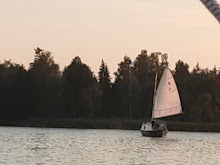Od jakiegoś czasu staram się mieć Brazylię na oku (i w uchu), więc nie mogłem przepuścić tego. Formę tego filmu trudno określić, to już nawet nie jest esej, tylko pojazd hybrydowy nowej generacji. Słusznie zauważono, że przekłada na praktykę strategię kanibalizmu kulturowego Oswalda de Andrade - choćby przez wplecenie fragmentów filmu Manoela de Oliveiry, czy też tekstów teoretycznych.

W tym wywiadzie reżyserka mówiła o innym swoim dokonaniu, ale wiele wypowiedzi rezonuje też w kontekście tego.
So much of the thinking behind my films comes from other forms, often poetry, literature, philosophical texts and ideas, a painting, an intuition. Therefore, often what the films are trying to do is to animate, to give life to that which was once fixed upon paper, rock or canvas—animating the ‘inanimate.’ If I was a novelist or a poetess, how would I write in a way that approximates temporalities? How would I punctuate? Why use—or not use—a capital letter? How would I compose an imagist poem with objects and sites rather than words?

The circulation and accessibility of images through digital databases suffer from this underlying danger of flattening experiences and histories into one homogenous amalgam, you have access to everything but asperities are increasingly smoothed through the ease and flow of your keys and fingers.



16mm is constructed around a community that is shaped by increasing scarcity. Recently, I was speaking with film students at the Federal University of Rio de Janeiro, and Juliano Gomes, film critic and their teacher, brought about an interesting reflection: that a community only strengthens and raises around a shared condition, often a condition of scarcity. This is a very meaningful reflection, not only for film of course. What can extinction pose to us as a question, to our imaginaries, to our activities, to our sense of togetherness?

7/14/2016
Há terra! - Ana Vaz (wpatrywanie cz. 33)
napisał
Piotr Tkacz
o
11:51
Subskrybuj:
Komentarze do posta (Atom)


Brak komentarzy:
Prześlij komentarz